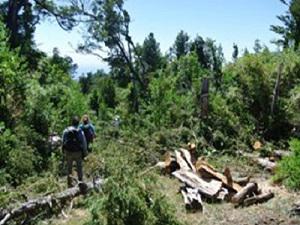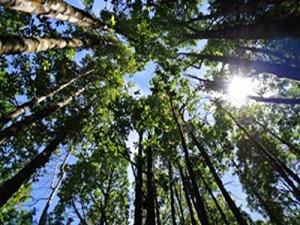Carlos Zamorano Elgueta
The project aims at identifying priority areas for forest restoration and to implement pilot restoration programs in the Valdivian Temperate Rainforest of southern Chile, by considering ecological and socioeconomic characteristics of the territory.

Degradation of forest for firewood production and livestock.
The coastal range of southern Chile concentrates the endemism of one of the world hotspots of biodiversity, and is characterized by high deforestation rates, fragmented remnant forest and few protected areas by the State. Our project will be developed in a surface of 2,000 ha in the coastal range of Región de los Ríos. This Region represents the limit between temperate forests of the coastal range best conserved and highly degraded forests of southern Chile. To assess restoration priority we will work with a multiscale approach, integrating environmental and social aspects. We will use a satellite scene of February 2011 and a set of key landscape metrics for the spatial configuration analysis of native forest.

Secondary forest.
We will establish 1,000 m2 plots according to the preliminary classification of fragments, determined by the most representative landscape metrics. At plot level we will register: woody species richness, forest regeneration and local disturbance factors defined for example by number and diameter of stumps (quantification of logging) and forest regeneration damage by browsing (livestock). Forest regeneration will be recorded in subplots (2 x 2) systematically distributed within each plot. This information is necessary to forest degradation impact analysis. To define restoration priorities areas we will considered the following criteria: a) Forest fragment stability (isolation, less core area and shape), b) Impact of degradation in forest regeneration/flora richness, c) Presence of endemic/threatened species, d) Distance from forest fragments, roads and protected areas, e) Risk of soil erosion.
We will work with seven rural communities selected according to: poverty level, ethnic origin (settler or indigenous) and spatial landscape configuration. We will be carried out interviews and workshops to identify main needs and interests of through the Livelihood System Approach (LSA). This information is fundamental to integrate the socioeconomic aspects in the prioritization and design of restoration programs. We will be integrating ecological and socio-economic variables through spatially explicit multicriteria analysis. Be carried out sensitivity analysis to generate maps of prioritization of restoration.
Restoration programs will be design with local actors integrating productive and conservation target. For example, we define ecological restoration, rehabilitation or reclamation areas, depending on the level of recuperation regarding the original ecosystem. We will develop training on various topics as the role of forests beyond wood production, planting techniques, etc. We will implement restoration programs at least with seven small landowners in an approx. surface of 3 ha each.